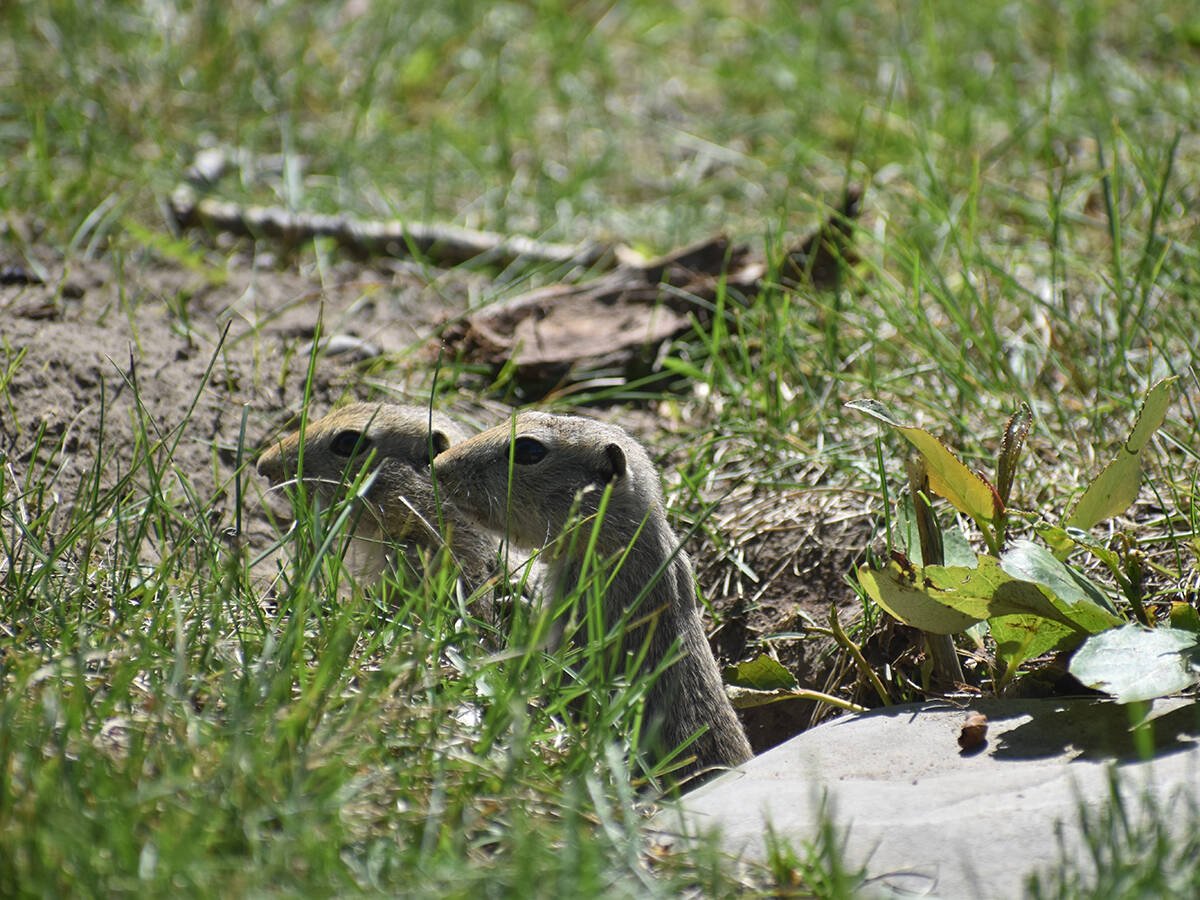The secret to keeping your boss happy while combining mucky fields is not to bust through the crust, says Wayne Ratzlaff.
He learned this lesson the hard way last fall.
A photo of Ratzlaff held in a headlock by boss Wayne Heppner took fifth place in Flaman’s 2010 Stuck in the Muck online photo contest for producers who found the Prairies’ soft spots last year.
“I was working for Wayne Heppner when I dropped through the crust. He was just giving me a bit of advice here,” Ratzlaff said.
Read Also

Rural officials hopeful strychnine use will resume
The Saskatchewan Association of Rural Municipalities is taking a verbal commitment from the federal agriculture minister on strychnine use as a good sign.
“Seriously, we’ve learned that if you think you’ll get lucky and pull yourself out by spinning the tires, you’ll just dig yourself deeper. The key is to back off the throttle immediately.
“The other thing is to get the tow tractor over there immediately. The longer you wait, the deeper you sink. It sinks by itself.”
Ratzlaff said they were loading hoppers half full to keep the weight down and usually transferred to the cart while standing still.
“Just sitting there, the combine would sink four or five inches. It almost broke through. That’s why the tow tractor is always ready to go immediately.
“We only had a wee bit of a crust. If you dared spinning through those top few inches, you were in.
“That’s what I did in the photo. I stopped to lift the table and back up a little bit and dropped through like a stone.”
Most of the 133 photos entered in the contest showed machinery in far worse situations, but Ratzlaff said that was the point of the photo: operators might not get buried so badly if they back off as soon as they start going down.
Heppner keeps the four-wheel drive tow tractor near the combine operation, free of other duties. As a result, combines were usually pulled out within 15 minutes of dropping through.
WORKING IN THE MUD
The tow tractor uses a $1,000, wide tow strap to do the job quickly and safely.
“Straps are great,” Ratzlaff said. “It’s not the pure pulling power of the
tractor that gets the job done. It’s the weight and momentum. We get a good run at it, a pretty fast clip. It goes pop and snaps you out like a slingshot.”
Many of these situations occur at night, and the tendency is to leave the combine and go home to get supper and sleep.
“Morning comes and you go out to the field and your combine has settled in another two or three feet,” he said.
“Bad way to start your day.”
He admitted that pulling stuck machinery at night isn’t the safest option. Operators are tired, maybe a little angry, and it’s dark. And when it comes to seeing safely, all the lights in the world aren’t as good as sunlight.
It’s a real dilemma, a perfect setup for an accident. But waiting for morning may only make it worse, and more expensive.
Some of the machinery stuck last fall wasn’t extracted until freeze up. In many areas, the water table was so high that backhoes called in to dig a ramp ended up creating a dugout filled to the brim with water.
“It would be good to hear from some of those guys to see how in the world they got that equipment out. Maybe there’s some tricks we could all learn from them.”
The 2011 Stuck in the Muck contest officially opened March 1. It can be found at www.stuckinthemuck.com.















